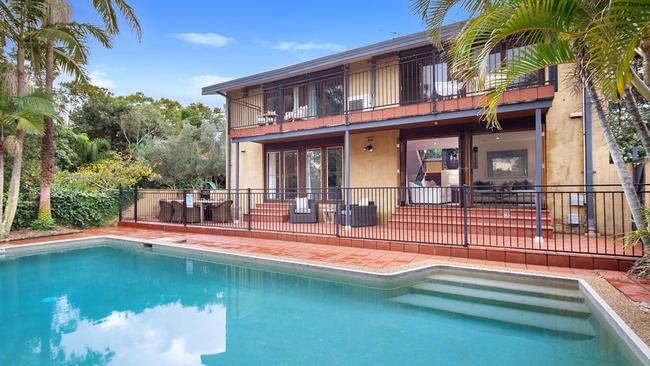Sydney rent: cost of renting a home in every Sydney suburb revealed, compare for yourself
Extreme housing shortages have sparked Sydney’s worst rental crisis, with tenants paying up to $500 a week more than a year ago. Compare every suburb.
Property
Don't miss out on the headlines from Property. Followed categories will be added to My News.
Rampant migration into Sydney amid extreme housing shortages has sparked the city’s worst rental crisis on record, with tenants paying up to $500 a week more in rent than they were last year.
Alarming figures released this week showed tenant demand has exploded since Covid border restrictions were eased earlier this year, while the supply of available rentals has halved since late 2021.
It’s contributed to the highest annual rent increases on record, with the average price of a Sydney rental ballooning by 26 per cent, according to SQM Research.
The increase was more than four times the rate of inflation and SQM Research director Louis Christopher said a slowdown in the construction industry was exacerbating the problem.
“The main issue is supply,” he said. “We’re simply not building enough relative to demand.”
Figures provided exclusively to The Telegraph showed ground zero for the rent crisis was a belt of low-density suburbs across the northern beaches, north shore and eastern suburbs.

House rents in Church Point, 32km north of the CBD, increased by an average of $450 per week, or 46 per cent, while in McMahons Point, on the north shore, the rise was 45 per cent, or $495 a week.
Rent increases of 30-40 per cent were recorded for houses in Double Bay and Matraville, in the east, Wheeler Heights on the northern beaches, and North Turramurra, on the north shore, according to the PropTrack data.
These were all areas with a tight supply of rental accommodation – particularly the eastern suburbs, where the supply of available rentals was a third of levels recorded last year.
Mr Christopher said the housing shortages meant the return of overseas migrants, along with a trend of renters being less inclined to share leases, was having a pronounced effect.
Tenants advocate Marcelle Wever said competition for rentals was so intense that it was “virtually impossible” for some people to find a home.
“If you don’t tick all the boxes for landlords, it’s extraordinarily difficult,” she said. “I’ve never seen it like this. It’s competitive across the board, even at the top end of the market.”
Open houses for rentals in the inner west and eastern suburbs were typically attracting 20-30 tenant groups, Ms Wever said, noting there had been reports of up to 100 groups attending inspections.
“A lot of expats are coming back home, and migrants that had their visas held up during the early days of Covid are finally arriving.
“There is a skills shortage too, so banks and other big companies are trying to bring in more people from overseas,” Ms Wever said.
“The problem is there are just less rentals around. Investors were pulling out of the market last year and often those properties sold to (owner occupiers).”
Ray White Touma Group’s Roger Wardy said rising interest rates and a lack of “quality” houses up for sale was putting further pressure on the rental market as many home sellers with plans to upgrade were becoming renters while they searched for their next house.

“There isn’t much stock available,” he said. “A lot of people just don’t want to feel pressured. They know it’s going to be difficult to buy so they’ll rent for 12 months while they look.”
Toni Rozen is selling her Rosebery house on Tweedmouth Ave at auction November 5 and said she will rent while she searches for a new home because she didn’t want to rush into a purchase.
“There’s not a lot for sale out there and I don’t want to feel forced to buy. I don’t want to compromise,” she said, adding that it would be a gamble considering the tight rental market.
“I have pets and I’m worried about finding a place that will accept fur babies. It will limit my choices.”
Buyer’s agent Colin Lee of Inspire Realty said policymakers were making the rental crisis worse by “demonising investors” and restricting their access to the market.
“Landlords have been discouraged from investing in property so supply has been falling,” he said.


Mr Christopher said introducing increased controls on landlords wasn’t the answer. “It’s easy to point the finger at greedy landlords but we live in a market economy. They wouldn’t have been able to lift rents if there was more housing supply.”
He added that increasing supply could take years and the construction industry was facing a barrage of challenges.
This included multiple developer bankruptcies, labour shortages and bottlenecked supply chains from Russia’s invasion of Ukraine and China’s zero Covid policy.
Some tenants would have to resort to extremes until the market improved, Mr Lee said.
“In some jurisdictions, rental listings are receiving unprecedented numbers of tenant applications, with those missing out being forced into temporary accommodation such as camping, couch surfing, hotel rooms and even vehicles.”
More Coverage
Originally published as Sydney rent: cost of renting a home in every Sydney suburb revealed, compare for yourself





